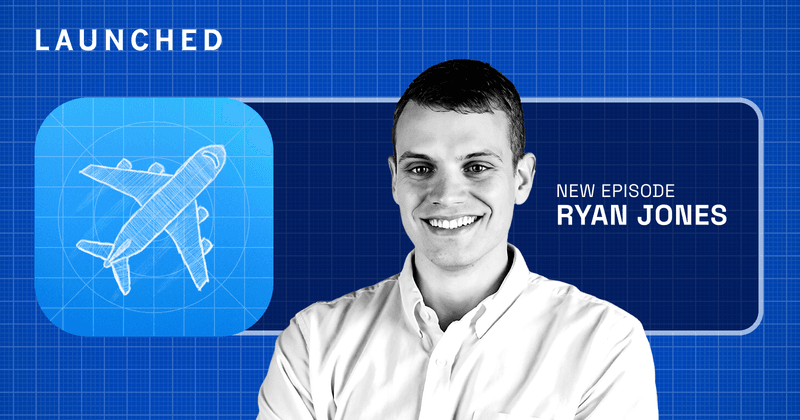When most teams think about growing a top-ranked app, the instinct is to reach for paid acquisition. But for Ryan Jones and the team behind Flighty – the meticulously crafted flight-tracking app – growth has come from a different place. Instead of ramping up ad campaigns, they’ve leaned into product, shareability, and craft.
This week on Launched, we sat down with Ryan to unpack how Flighty became one of the most beloved travel apps in the world by focusing almost entirely on the product experience.
Product is the growth engine
Flighty’s philosophy is clear: build great features, and growth follows. Whenever the team has experimented with more conventional tactics, the trade-offs were obvious. As Ryan recalls, “Every time we focused on product, we would’ve gotten basically more growth or free growth.”
The opposite was equally true: “Every time we chased marketing tactics, we stalled.”
Over the years, Flighty has tried three separate attempts to spin up performance marketing. Each time, it diverted the team’s attention and delivered little in return. As Ryan puts it, “It takes a significant amount of our attention away from building product… and at the end of the day… it kind of breaks even.”
That pattern reinforced a simple operating principle: “We just need to stay at the stuff that we’re great at.”
Focus on shareability, not scale
Some of Flighty’s strongest growth has come from features that weren’t even designed for growth. The digital passport – an automatically updated, beautifully rendered flight log – quickly became one of the app’s biggest organic drivers. According to Ryan, “The passport itself… if it’s not our number one growth driver, it’s top three.”
The team spent months refining small touches, including a now-iconic black-light effect. “One of the things that we haven’t mentioned yet… on the original one, a black light button… that was a huge part of it.”
Not every experiment landed. Their first attempt at a “year in review” flopped: “For some reason it just didn’t really catch on.” But revisiting the idea through the lens of craft, storytelling, and visual delight produced a completely different outcome: “It took us a while, but we figured out that… it’s gone crazy.”
Other features quietly fuel the same organic loops. Flighty’s live flight-sharing links, for instance, solve a familiar problem for travelers and introduce new users in the process. Ryan summed up the intention: “We’re looking for things that we can do in Flighty that help the user… and help someone else come into the ecosystem.”
A deliberate approach to acquisition
Flighty doesn’t run Facebook ads, TikTok campaigns, or performance UA. The only paid channel it invests in is Apple Search Ads (ASA).
“The one thing we do do is App Store Optimization or ASA,” Ryan explains. And it matters: “That’s probably 20 or 30% of our new users… come through ASA.”
But even here, the team is cautious. Running ASA without expertise is a quick way to burn money. As Ryan puts it plainly: “If you’re doing the basic version of ASA, you’re probably losing money.” The solution, he says, is simple: “You have to have… a specialist.”
Growth from delight
Flighty’s reputation has also benefited from embracing new iOS capabilities like Live Activities and Dynamic Island on day one. These moments led to App Store features and Apple mentions, but the real value came from how seamlessly they improved the experience for travelers.
Above everything else, the team relies on a simple north star: would we want this ourselves? That consistent focus on usefulness, clarity, and delight has helped Flighty grow on its own terms – without chasing the typical tactics.
Conclusion
From the viral passport to disciplined ASO, this episode offers a clear blueprint for product-led growth. Whether you’re building a travel app or scaling without traditional ad campaigns, Ryan Jones shows how far a team can go by focusing deeply on what they do best and letting users spread the word.

